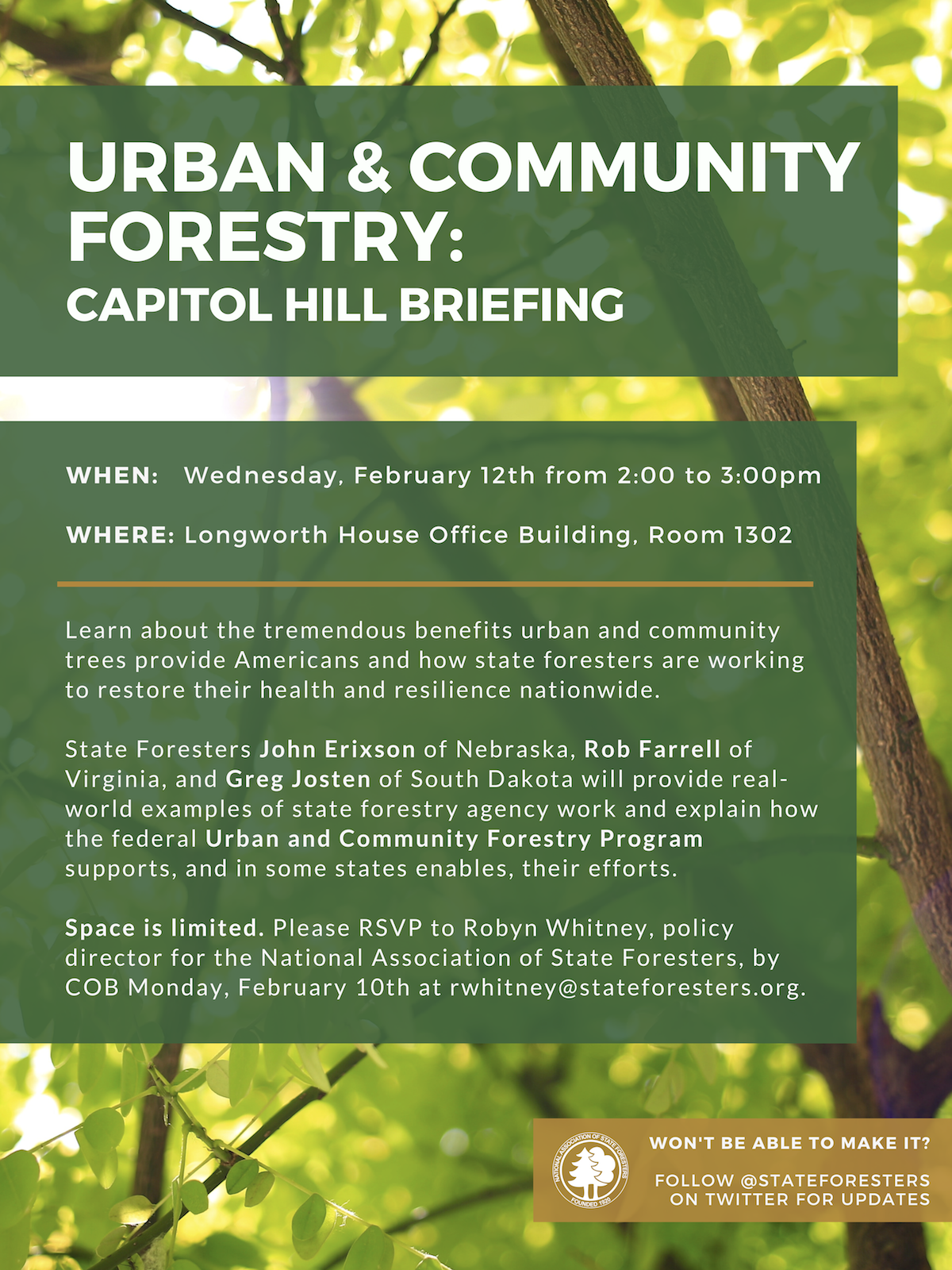 While NASF leadership was in town this week for the first of three 2020 Executive Committee meetings, the state foresters of Virginia, South Dakota, and Nebraska held a Hill briefing for U.S. House of Representatives staffers on urban and community forestry.
While NASF leadership was in town this week for the first of three 2020 Executive Committee meetings, the state foresters of Virginia, South Dakota, and Nebraska held a Hill briefing for U.S. House of Representatives staffers on urban and community forestry.
State-led Urban and Community Forestry (UCF) programs provide critical assistance to communities in establishing and managing local urban and community forestry resources. Put simply, these programs help keep trees and forests in our communities healthy.
Nationwide, more than 220 million people—or 83 percent of the population—who live in urban areas benefit directly from community tree canopies. The benefits of trees are numerous and varied (learn more about them by clicking here).
In addition to state UCF programs, there is a federal UCF program housed within the USDA Forest Service’s State and Private Forestry mission area. This federal program is funded by Congress through the annual appropriations process and administered by state forestry agencies.
For a number of states, federal UCF program dollars are absolutely essential to providing UCF assistance and services to communities. In every state, forestry agencies match federal UCF dollars at least 2-to-1 and as high as 8-to-1.
Interested in learning more about UCF and all its benefits? Check out the one-pagers linked below or reach out to NASF UCF Committee staffer Keith Wood.

